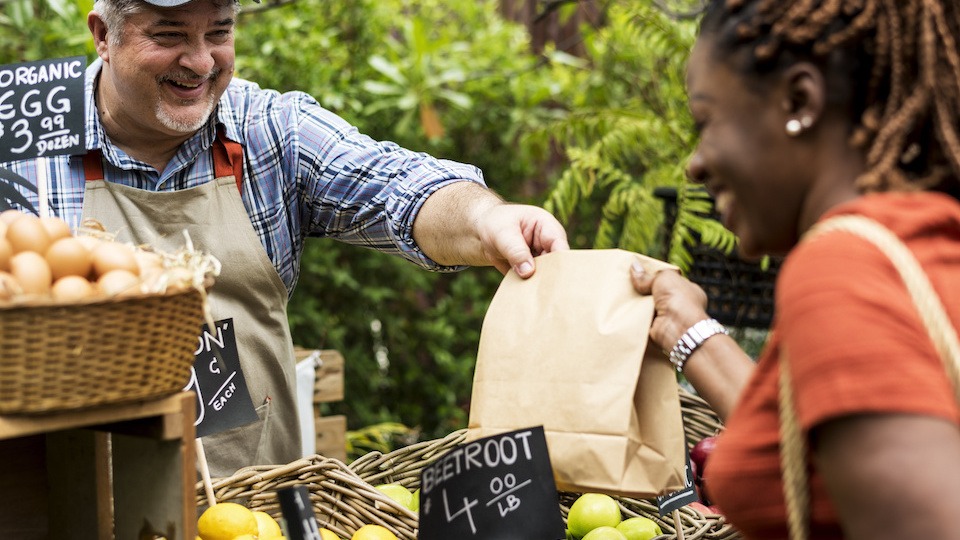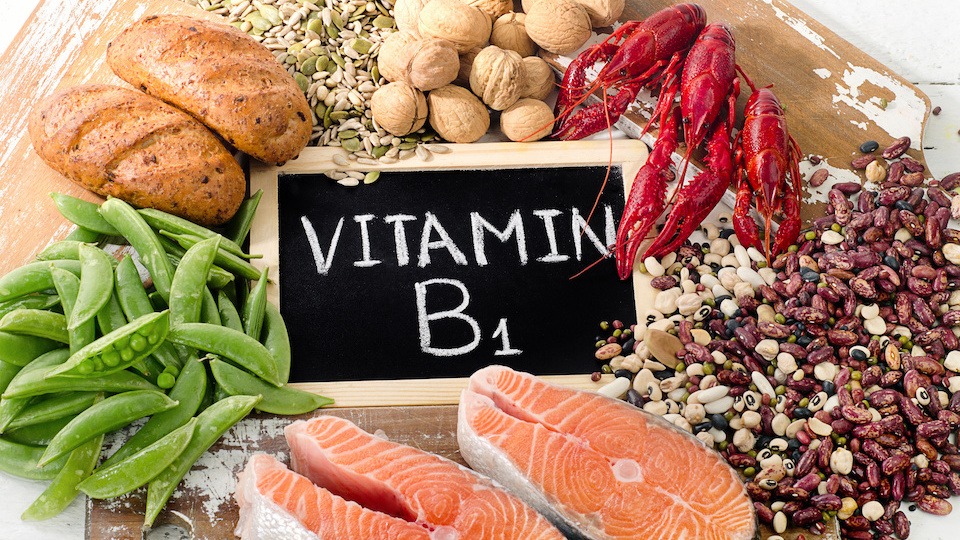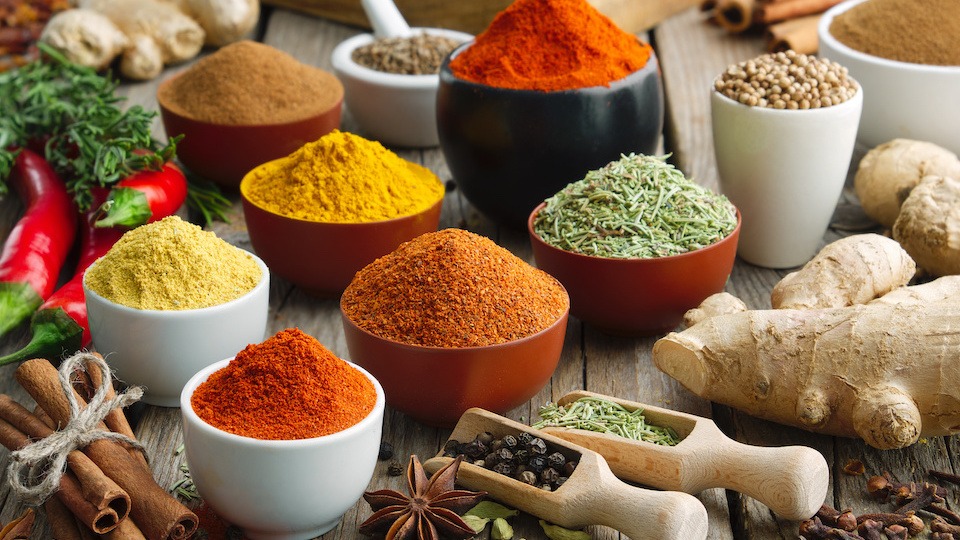It’s February in Connecticut, and the closest fruiting banana tree is probably at least 1000 miles away. The same goes for strawberries, watermelon, pineapple, and pretty much every other warm-weather crop you can think of. And yet, here in the depths of the New England winter, I can walk into any grocery store and find a produce section brimming with fruits and vegetables that look (but don’t always taste) like they are in peak season. On the one hand, that’s the beauty of a global agricultural system. But on the other hand, the promise of “peak season” produce all year long has created a whole set of new problems. Those problems and their solutions are covered in this thoughtful piece about the increasingly popular “local food” movement…are you a member?
Enjoy,
-JL
Forty years ago, the words “local food” were reserved for hippies and environmentalists who promoted eating close to the ground and close to home. Today, the country is abuzz with the word “local,” and now we have seen a significant rise in farmer’s markets, food co-ops, and home gardens in response to an ever-growing concern for the environment and health. We see everyone from homemakers to politicians to retirees and college students embracing the local food movement. Let’s explore why this movement, once particular to hippies, has gone viral!
What exactly is the local food movement all about?
At the heart of the local food movement is people from all over the nation promoting the value and many benefits of eating locally grown food. The one thing that is not so clear is how “local” is actually local. For most “locavores”, eating as close to home as possible is the objective. This can mean different things to different people. For example, for one person, “local” might mean right in their backyard, while for another, the local farmers market may do the trick. Keep in mind that the further food has to travel, the greater the impact it has on the environment and the less nutritious it may be.
If you are considering going local, take a piece of paper and draw yourself in the center with concentric circles beginning with the food you can grow at home to your community, state, surrounding states etc…Only you can define your local comfort zone. For most people, growing at home and buying in the community works best to satisfy their desire to consume locally.
What about organic and sustainable?
You might hear both of these terms popping around the local food movement circles. It is important to note that while the local food movement does include ideas on how to be more sustainable and organic, it is not dependent on either one of them. True organic food is defined and monitored by a set of government standards. Basically, organic foods are grown without the use of chemicals, pesticides, or growth hormones of any kind. Sustainable agriculture includes organic, but it also means that food is grown without causing any harm to the environment and respects both workers and animals. The one mistake a lot of people make is to assume that all local food is also organic and sustainable. While a lot of local food is organic and often sustainable, some is not.
Let’s look at an example. Chickens might be raised only ten miles from your home, making them local. However, if they are raised in poor conditions and are given hormones and antibiotics, they are not organic or sustainable.
Historically, organic and sustainable food has played a major role in the growth of the local food movement; however you still need to be cautious of exactly how your local food is raised and grown.
How did the local food movement get started?
The local food movement began after there was a shift in the federal farm policy in the 1970’s. Up until that time, federal money was used to help supplement farmers. President Nixon promised to slash food prices, and he did this by moving federal dollars from farmers in general to supporting only a few commodity crops – mainly corn and soy. Of course, food prices dropped but at the expense of farmers who were devastated by this policy shift. This decision brought farming as America had known it to a screeching halt. Family farmers had to file bankruptcy and leave the only thing they ever knew – it was indeed a sad time in American history.
Small farms were purchased by large companies that consolidated and became massive enterprises that produced vast amounts of soy and corn. Because corn and soy are so cheap, a large number of new foods were invented using these ingredients. The market was flooded with highly processed foods such as sweetened drinks and feedlot meat – the American diet was changed forever.
In protest, the local food movement was born and represented those that would not settle for what the government and massive food giants were shoving down the throats of the American people.
Food was traveling all over the world
At the same time, as big companies were gobbling up small farms, and sugar and corn became staple in the American diet, “internationalization” and “globalization” became buzz words. Put simply; food began to circulate all over the world. This meant getting strawberries in the middle of winter, even though your local season might be in June. This meant that we could buy any apples, any time of year because they were no longer local – they were traveling many, many miles to get to our local grocery stores who were no longer selling local food only. This applies to all food from fresh to frozen and processed – it was flowing into our community stores from all over the world.
What these movements have done to America
Today, some twenty-five to thirty years after Nixon and the shut down of the family farm, we see first-hand the impacts of policy and globalization, and it’s not good. We see economic disaster, health disasters, including a massive spike in obesity and lifestyle-related illnesses such as type 2 diabetes and heart disease. Social structures have crumbled, and political chaos can, at least, in part, be blamed on our current food crisis.
The economic implications of the local food movement
Yes, not eating locally is, on many levels, cheaper than eating locally. Because of advancements in technology and globalization, it is cheaper to get food from other countries than from our own. For instance, both land and labor are cheaper in Costa Rica than in Hawaii. This means that pineapples grown in Costa Rica are cheaper than those grown in Hawaii. Because of this, the trend away from local food ensued for several decades as people pinched pennies and slashed grocery bills – putting the mighty dollar above the environment and their health.
What about the hidden costs of cheap food?
We must not ignore the hidden costs of cheap and highly processed food, including the present obesity and health crisis our country is experiencing. Rising healthcare costs, lost days at work, and a very sick society – are these things really worth a reduced grocery bill and the abolition of the American farm of old?
Consumers are now more aware than ever of the hidden dangers of cheap food. They are being exposed to the truth, which is providing fodder for the local food movement in America and beyond.
The sad truth about the health implications of a soy and corn flooded food system
Since Nixon’s promise to slash the price of food, the American population has become fat and sick. The statistics don’t lie, and the correlation between the end of the American farm, the introduction of corn and soy subsidies, and the globalization of food and rising health issues can’t be ignored. Americans have steadily increased their caloric intake of cheap foods and are overwhelmed with food advertising and diversity – so many choices!
There was once a time when type 2 diabetes was rare, today it impacts people of all ages, including children who are being raised on a diet of sweetened corn cereal and soda. High blood pressure, heart disease, thyroid problems, and even an increase in joint replacement all parallel the obesity epidemic. Yes, food may be cheap – well, fake food may be cheap – but the costs are paid on the other end by poor health and poor quality of life – even a shortened lifespan.
Food safety scandals and massive, multi-state recalls are commonplace, including outbreaks for E.coli that have caused consumers to question – is our food really safe? This mounting concern over food safety has also fueled the local food movement. Consumers want to know that the food they put on their table won’t poison their families.
The environment is also suffering under the heavy weight of our current food system
It is not just humans who are being impacted by our present food system but also the environment. The death of the family farm and the birth of massive corporations whose sole objective is to produce as much as they can as quickly as possible and lower end prices has driven harmful practices to a new all-time high. Animals are given antibiotics and growth hormones, fields are flooded with toxic chemicals, and machines have replaced humans in slaughtering and processing. Major corporations are dumping toxic sludge into our streams, rivers, and lakes, polluting groundwater and destroying animal habitats. Plastic bottles, containers, and bags used in the delivery of food are polluting our earth and overflowing in our landfills. The result is tremendous damage to the environment that can never be repaired.
Environmentalists and advocacy groups are no longer sitting on the sidelines, and consumers are jumping on the local food movement wave in great multitudes.
What the local food movement is accomplishing
Beyond better health and a smaller carbon footprint, the local food movement is doing something else amazing. Local food advocate and author Michael Pollan points out that supporting the local food movement has massive social implications that no one forecasted. For instance, the movement has cultivated a real sense of identity, community, and joy that was stolen with the death of the family farm. There is now a new space, the local food space where people can safely eat, feel good about supporting not only the local economy but also treading lightly on the earth. The local food movement is a place where people don’t have to feel pressured by the government or big corporations. The squeeze is gone and what is left feels very liberating to those embracing the local food movement. It’s like we have our voice back, our choice back, and it feels really good.
The local food movement is for anyone and everyone
The local food movement is no longer reserved for hippies and tree huggers. It is in mainstream society and picking up momentum. It is for families in the country, and for urban dwellers. It is for anyone and everyone who wants to embrace a healthier way of life and avoid the pressures and politics that taint our present food system.
How about it, are you ready to become a “locavore”?
-The UpWellness









